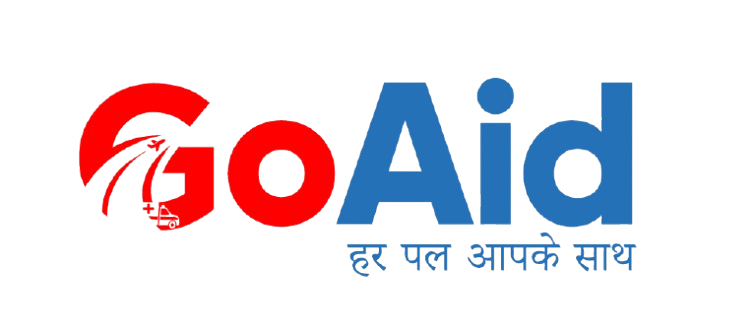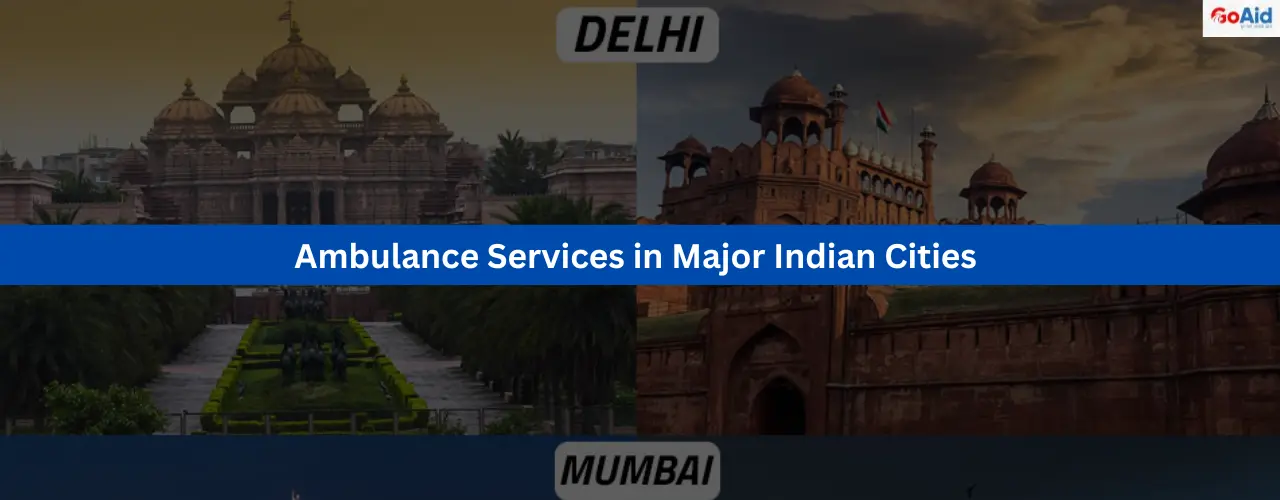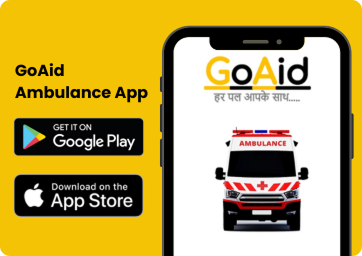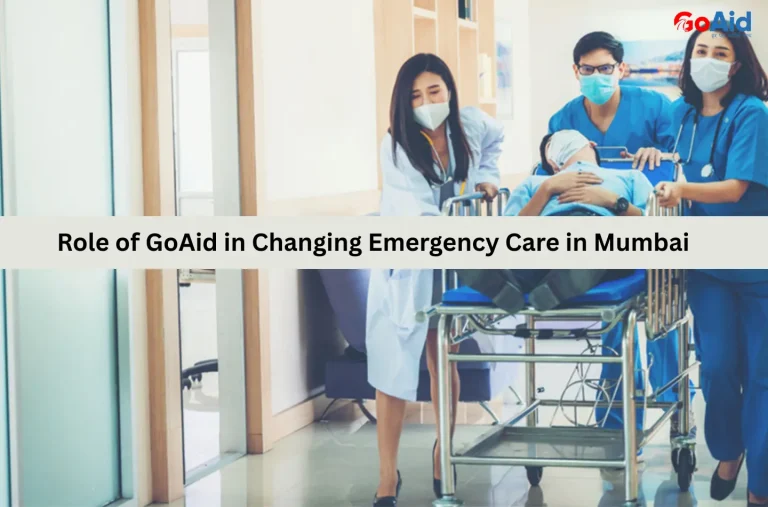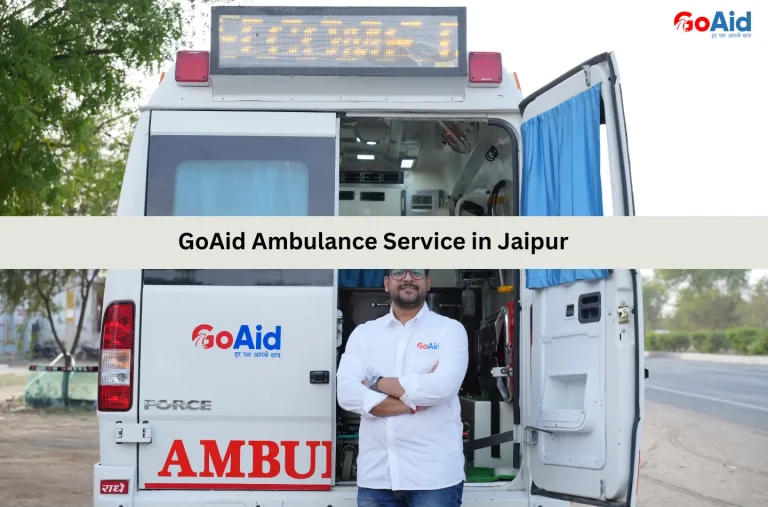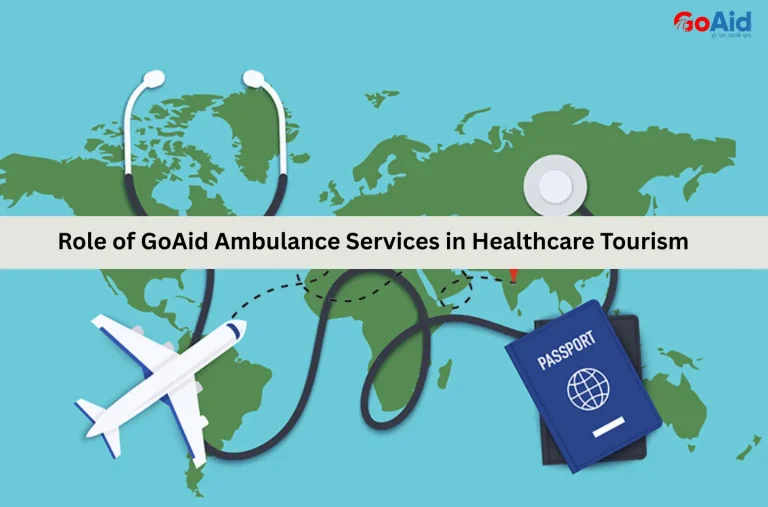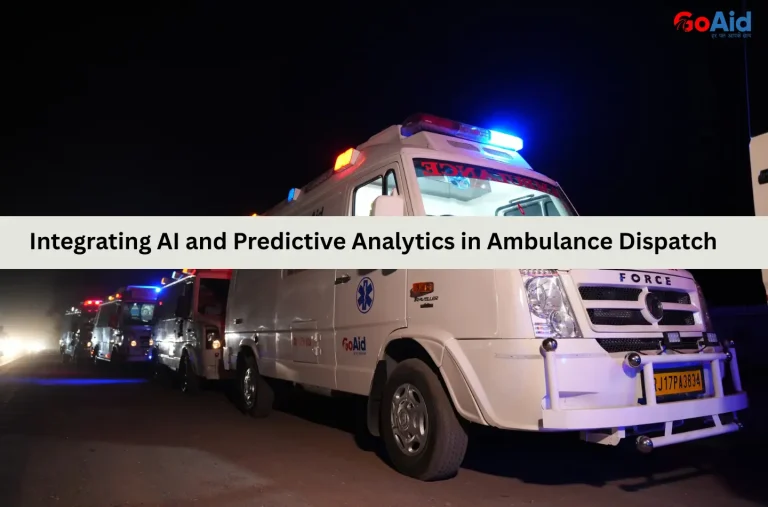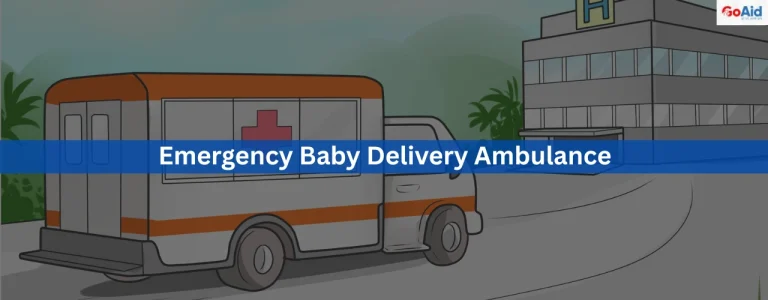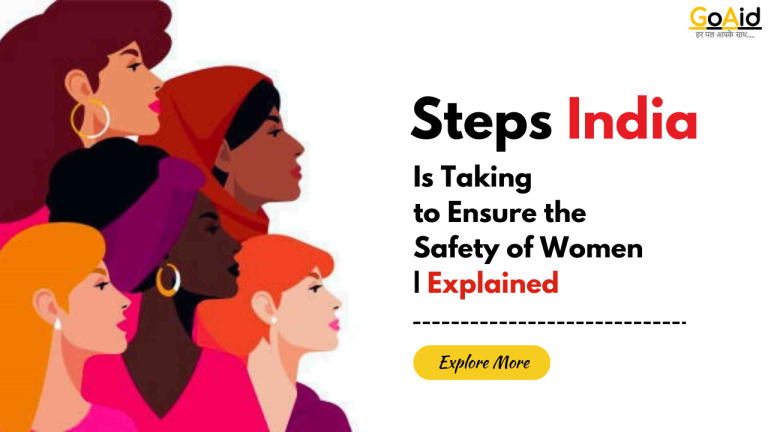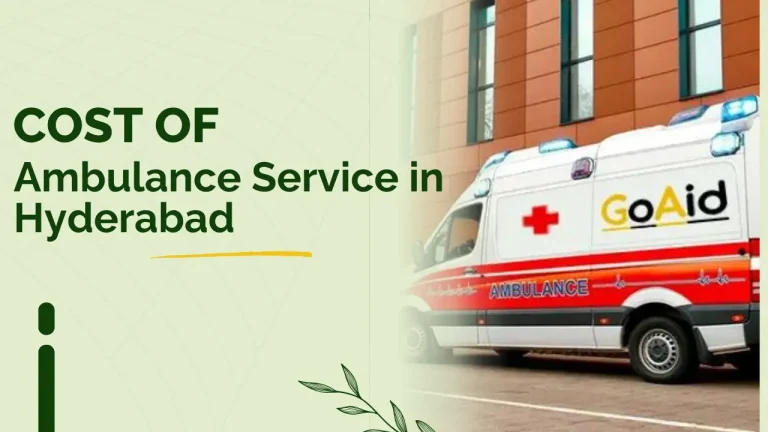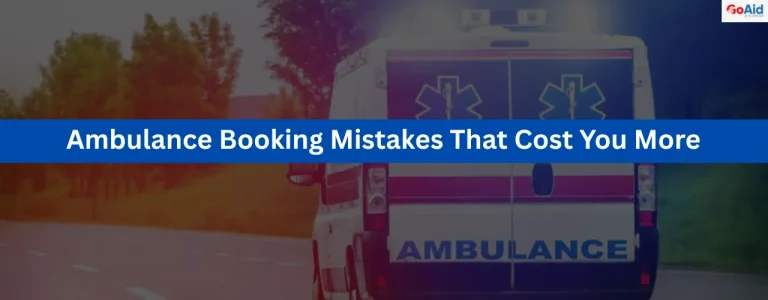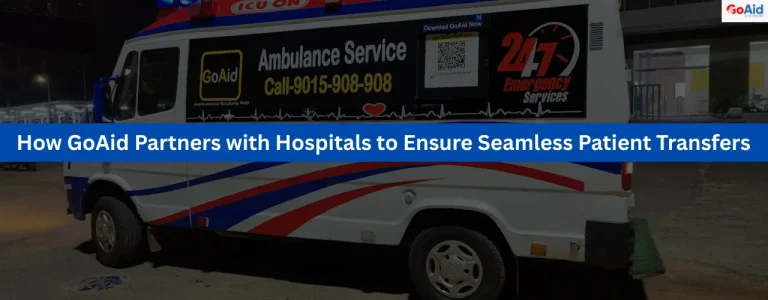Major Indian cities like Delhi, Mumbai, and Bangalore face high population density and frequent medical emergencies. This makes efficient ambulance services essential. Ambulances in these urban areas must navigate heavy traffic, crowded streets, and diverse terrains to reach patients quickly.
GoAid Ambulance Service stands out by providing a combination of well-equipped ICU and life-support ambulances, trained paramedics, and real-time GPS tracking for rapid dispatch. These cities also have multiple private and government ambulance providers, but response times, equipment quality, and paramedic expertise vary widely.
GoAid ensures consistent service quality, 24/7 availability, and prompt patient transfers. This makes it a trusted provider. Effective emergency medical coverage in major cities is vital for saving lives and managing critical cases efficiently.
GoAidŌĆÖs Response Time Metrics Across Cities
GoAid Ambulance Service is committed to providing rapid emergency medical response across IndiaŌĆÖs major cities, including Delhi, Mumbai, and Bangalore. Their average response time in urban areas is just 10 minutes.┬Ā
This ensures patients receive immediate attention during critical emergencies. GoAid tracks every ambulance using real-time GPS and sophisticated dispatch systems, which allow the nearest available vehicle to reach the patient quickly.
Trained paramedics onboard, along with ICU-equipped ambulances, provide professional care even before hospital arrival. High-demand areas and traffic congestion are managed with strategic pre-positioning of vehicles.
GoAidŌĆÖs consistency in maintaining short response times ensures that residents in these cities experience reliable, life-saving emergency services when every second counts.
Factors Affecting Ambulance Response Times Depending on Cities
Several urban challenges influence ambulance response times in different cities.
Factor-1: Traffic Congestion
Dense traffic slows ambulances, especially during peak hours. This makes it difficult to reach emergencies promptly without strategic routing and traffic coordination.
Factor-2: Population Density
High population areas generate more calls, increasing demand and sometimes delaying ambulance availability for urgent cases.
Factor-3: Urban Layout
Narrow streets, one-way roads, and complex city layouts hinder fast ambulance movement, requiring route optimization.
Factor-4: Hospital Proximity
Availability of nearby hospitals affects patient transfer times and determines how quickly care can begin.
Factor-5: Emergency Call Volume
High volume of calls in large cities may require prioritization, affecting response for less critical emergencies.
Factor-6: Ambulance Fleet Size
A larger, well-distributed fleet allows faster response, while fewer vehicles can lead to delays.
Factor-7: Dispatcher Efficiency
Efficient call handling and optimal ambulance assignment reduce response times significantly.
Factor-8: Weather Conditions
Rain, fog, or extreme heat can slow vehicle movement, affecting response times and patient safety.
Factor-9: Public Awareness
Awareness of emergency numbers and protocols ensures quicker contact and faster deployment of ambulances.
Factor-10: Event or Festival Crowds
Large gatherings can obstruct ambulance routes and increase response times unless pre-planned standbys are deployed.
Other Key Factors Need to Be Considered for Fair Comparison
Comparing ambulance response times across cities requires evaluating more than speed. Factors like ICU availability, paramedic efficiency, booking options, urban challenges, and public awareness all influence overall effectiveness and the quality of emergency patient care.
ICU and Life-Support Availability Comparison
The availability of ICU-equipped and life-support ambulances directly impacts patient outcomes. In Delhi, Mumbai, and Bangalore, GoAid ensures that advanced ambulances with ventilators, cardiac monitors, and trauma kits are strategically deployed.┬Ā
This ensures critically ill patients receive immediate in-transit care, stabilizing them before hospital arrival. Cities with fewer equipped vehicles may struggle during peak emergencies, highlighting the importance of advanced medical support.
Trained Paramedics and Crew Efficiency
Paramedic expertise significantly affects emergency outcomes. GoAid deploys highly trained crews capable of handling trauma, cardiac arrest, and other critical situations in congested urban environments.
Efficient teamwork, rapid decision-making, and familiarity with city layouts allow paramedics to stabilize patients quickly and safely. Inexperienced crews or a lack of specialized training can delay treatment, jeopardizing patient safety.┬Ā
Booking Options and Accessibility Across Cities
Easy access to ambulance services improves response efficiency. GoAid offers multiple booking options, including a 24/7 helpline and mobile app. This ensures users in Delhi, Mumbai, and Bangalore can request ambulances instantly.┬Ā
Real-time tracking, digital booking confirmations, and flexible scheduling reduce wait times. Cities with limited accessibility or outdated systems may delay dispatch.
Emergency Coverage Challenges in Urban Areas
Urban areas present unique obstacles for emergency services. High traffic, narrow roads, large crowds, and construction zones can slow ambulances. GoAid overcomes these challenges through strategic pre-positioning, GPS-based routing, and coordination with local authorities.┬Ā
These measures allow ambulances to reach critical patients quickly, even during peak congestion. Without such planning, emergency coverage can be inconsistent, affecting patient survival.
Awareness in People Depending on Cities
Public awareness directly affects ambulance response times. Citizens who know emergency numbers, booking apps, and on-site procedures allow quicker dispatch and access. GoAid promotes awareness through campaigns, mobile app guidance, and community programs.
Cities with low awareness often experience delayed emergency notifications, slowing ambulance deployment. Educated residents, informed about ambulance locations and proper reporting, enable paramedics to reach patients faster.
How GoAid Maintains 10-Minute Response in Key Cities?
GoAid Ambulance Service ensures a 10-minute response in Delhi, Mumbai, and Bangalore through strategic pre-positioning of ambulances in high-demand areas. Advanced GPS tracking enables dispatchers to assign the nearest available vehicle instantly. Trained paramedics onboard provide immediate care, stabilizing patients even before hospital arrival. Real-time traffic monitoring allows ambulances to navigate congested streets efficiently, while multiple booking options via app and helpline facilitate instant requests. Coordination with local authorities ensures smooth access in restricted zones. GoAid also monitors peak-hour patterns and festival events to anticipate demand. Combining technology, trained staff, and logistical planning guarantees consistent, life-saving emergency response across major Indian cities.
Tips for Choosing Fast and Reliable Ambulance Services
Selecting a trustworthy ambulance service is crucial for emergencies. Consider these factors to ensure rapid, safe, and professional patient transfers, minimizing delays and maximizing care quality.
Check Response Time
Prioritize services known for quick response, ideally under 10 minutes, to reduce risks during critical emergencies.
Verify Paramedic Training
Ensure the crew is trained in trauma, CPR, and ICU care for effective patient management.
Assess Ambulance Equipment
ICU, ventilators, oxygen support, and trauma kits must be available for emergencies.
Review Fleet Availability
Multiple strategically located vehicles increase reliability and reduce delays.
Confirm 24/7 Service
Continuous availability ensures emergencies are handled anytime, day or night.
Evaluate Booking Options
Helpline, mobile app, or online booking allows instant ambulance requests.
Check Safety Standards
Verify adherence to government-approved protocols and safety regulations.
Read Reviews and Ratings
Previous patient experiences indicate reliability and service quality.
Compare Pricing Transparency
Affordable, government-approved rates prevent unexpected charges during emergencies.
Look for City Coverage
Ensure the service covers all urban and suburban areas for prompt response.
Conclusion
In conclusion, we have provided all details about the Delhi vs Mumbai vs Bangalore Ambulance Response Time Comparison. GoAid Ambulance Service maintains a 10-minute response, ICU-equipped ambulances, and trained paramedics across major cities.┬Ā
Efficient booking systems, real-time tracking, and proactive planning ensure fast, safe, and reliable emergency patient transfers. By considering response times, equipment, paramedic expertise, and city coverage, residents can choose the best ambulance services.
GoAidŌĆÖs consistency and professional approach make it a trusted choice for critical medical emergencies in urban India.
FAQs
Q1: What is the average response time of GoAid ambulances in Delhi, Mumbai, and Bangalore?
A: GoAid maintains an average 10-minute response time in these cities. This ensures rapid emergency medical care for critical patients.
Q2: How does GoAid handle traffic congestion during emergencies?
A: GoAid uses GPS-based routing, pre-positioned ambulances, and coordination with local authorities to navigate traffic efficiently and reach patients quickly.
Q3: Are GoAid ambulances equipped for critical cases?
A: Yes, GoAid ambulances are ICU-equipped with ventilators, oxygen, cardiac monitors, and trauma kits for immediate on-site care and transport.
Q4: Can I book a GoAid ambulance anytime?
A: Yes, GoAid offers 24/7 booking via mobile app, helpline, or online platform to ensure timely ambulance dispatch.
Q5: How do trained paramedics improve emergency response?
A: Paramedics stabilize patients, provide trauma care, monitor vitals, and ensure safe transport, significantly improving survival chances during emergencies.
